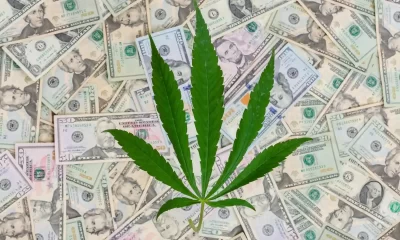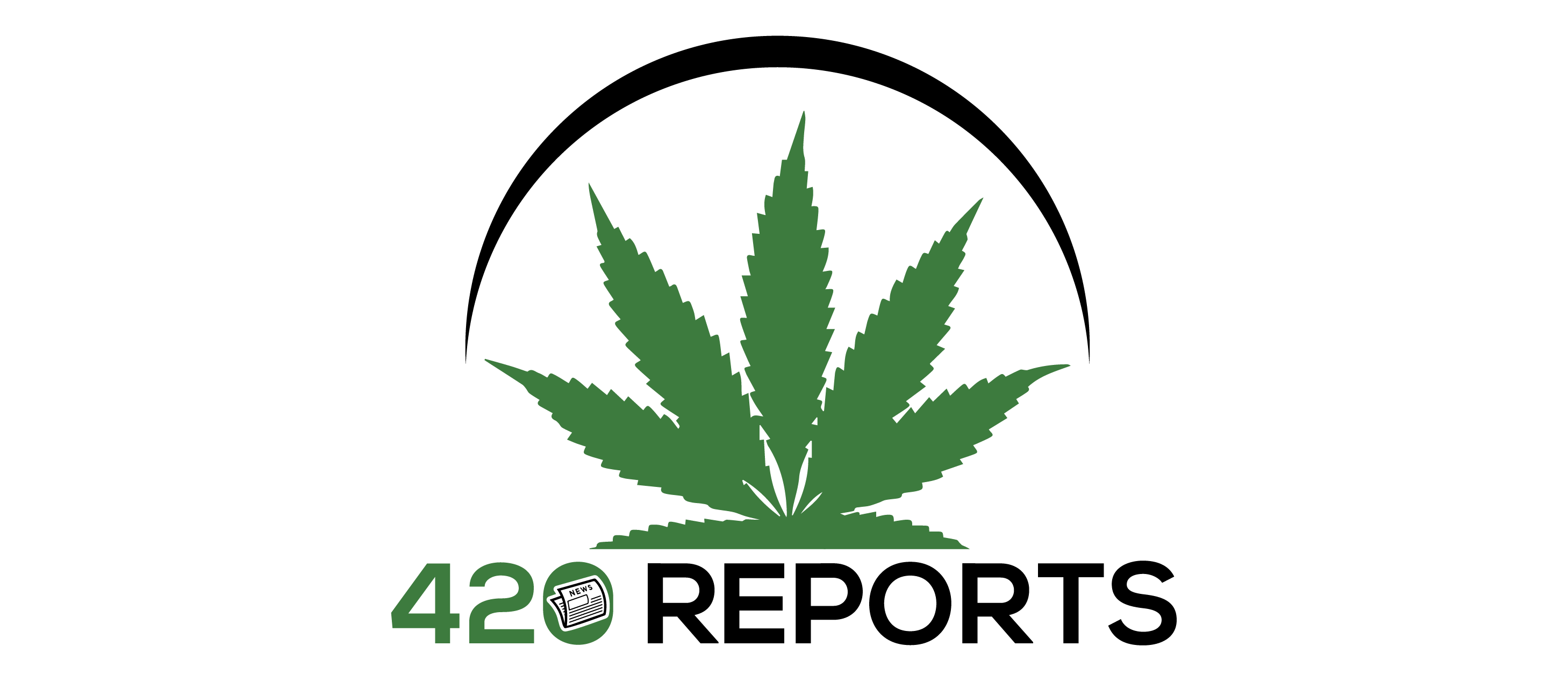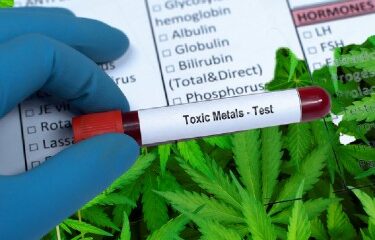Blogs
Is Cannabis a Pacifier for the People or the Great Awakener for the Masses?

Marijuana is Not the Next Pacifier, But the Great Awakener Instead
Is cannabis a pacifier?
North Dakota voted on November 8th to try and legalize cannabis in the state, as many other states, which means that many people expressed their “opinions” about the matter. While the vast majority of opinions are best left ignored, I found this one submitted to “MinotDailyNews” asking the question, “Will Marijuana be the Next Pacifier?”
The reason why this question caught my attention is because of a combination of factors. Firstly, this is the exact same rhetoric that was used in the 1970s-1980s during the US-Russia Cold War. Interestingly enough, the US and Russia are yet again at another Cold War. Let’s call this one “Luke Warm War” where the Ukraine is being used as a proxy for their idiocies.
“But Reginald…the War in Ukraine is all about…” Money, Power and a shifting of global dynamics. But most people are focused in on the narratives being sold to them by the media. If you actually did some critical analysis, you’d understand that it’s about the US losing its firm grip on the global stage, the devaluation of the Petrodollar, the low-key alliance of China and Russia, and if you really want to get all conspiratorial – unelected Elites pushing a globalist agenda aka “The Great Reset”.
But we’re not talking about any of that. Rather, we’re talking about the specific usage of the words, “Cannabis the Great Pacifier”.
During the Cold War, Prohibitionists utilized the same rhetoric to maintain the oppressive policies of prohibition claiming that “cannabis would pacify Americans against the Russians” and therefore, they justified prohibition to keep everyone on the “up and up.”
Interestingly enough, a few decades earlier, cannabis was “making people violent” which was their justification for keeping it illegal.
This was the reason my interest sparked at the question. However, upon reading the opinion, I understood that it wasn’t entirely about this geopolitical perspective but from another one completely different.
Therefore, in this article, I’m going to be analyzing the opinion of Lloyd Omidahl claiming that cannabis is a pacifier to get through life.
Oh my Lloyd!
The dynamics of this article will go as follows. I’ll directly quote him and respond in kind.
Since some may think this measure is about marijuana for medical purposes, it is necessary to verify that North Dakota already has medical marijuana. It is a well managed system after a lot of hard work by the legislature cleaning up a poorly drafted measure and the Department of Health then working through the administration.
Lloyd
I really don’t have an opinion about this. I knew that ND have a medical cannabis program but didn’t know how disorganized it was. However, I don’t think people are unwary of the fact that they are voting on recreational cannabis. Most people voting on November 8 are going to vote for recreational cannabis, not for medical cannabis. This isn’t about medical cannabis, it’s about undoing the harms of prohibition.
Administering and controlling recreational marijuana will fall primarily on law enforcement officials who will now have to police underage potheads. Law enforcement at all levels has bigger fish to fry than to chase juveniles violating the 21-year old limitation. Like alcohol, marijuana will drift down into the hands of the lower ages — even junior high and senior high students.
Lloyd
I don’t think “administering and controlling recreational marijuana” will fall on law enforcement. If we take a look at every other recreational cannabis market, there is typically an agency in charge of establishing the rules of engagement. Sure, it’s on law enforcement to ensure that those who do not abide by thus said rules are “punished” – however, the administration and control will most likely fall on a special government agency. While it’s true that “the police have bigger fish to fry”, the fact of the matter is that drug prohibition chews up a lot of their resources. This goes beyond just marijuana, it includes all drugs.
Drug use is not a law enforcement problem. It’s a public health problem that stems from a lack of education. It’s like trying to mend a broken bone by beating it with the butt of a gun – it doesn’t do anything! And yes, Lloyd is correct that cannabis will make its way into the hands of the youths, however, if we look at the statistics in Colorado and Washington, it will actually reduce the instances of this happening. Young adults, those above the age of 21, will see a spike in use, but that too will eventually level out.
We never seem to run out of the need for more and more pacifiers to cope with life. In the early ’90s, we outlawed booze because it was eating up families. Dad’s check wasn’t making it past the bars. But it had to be repealed because the people rebelled, needing an alcoholic fix more often than the “blind pigs” could provide.
Lloyd
I didn’t know that ND outlawed alcohol in the 1990s. After doing a basic Google Search, I couldn’t find any instances of it anywhere. Perhaps it was a specific county in North Dakota? What I did find was that between the 1890s and 1910s, there was a prohibitionist move as all over the US. The following years, we also saw a rise of violent illegal alcohol operations and the rise in the power of the Mafia. Alcohol prohibition was finally repealed when enough young blood was spilled over the control of sales of alcohol. These giant mafias then started the brands that you drink today. People didn’t rebell because they needed an alcohol fix – they repealed prohibition because the quality of the alcohol sometimes killed people, mafias grew in size, and those who were addicted to alcohol still found a way to continue consuming. In other words, prohibiting the substance only made matters worse.
And we now have what is called “comfort food.” I would guess that Americans eat more crunchies and chips than any other nation in the world. And it shows. In North Dakota obesity has tripled from 11% in 1990 to 32% in 2020.
Lloyd
Yes, you can actually track down obesity spikes to the 1970s with the introduction of High Fructose Corn Syrup and processed foods. Try buying anything in the US that doesn’t have this. Couple this with a decline in exercise and you’ve got yourself a perfect scenario for inflating people’s cholesterol. I do agree that “comfort foods” became a thing, but that could also be due to the addictive nature of High Fructose Corn Syrup. Also, the FDA has done a piss poor job at actually ensuring that Americans get healthy foods in their system – mainly because they are funded by the very groups they are supposed to be regulate.
But alcohol and comfort food are not enough. We also have high-powered coffee. If that doesn’t produce the right high, we can also down a Red Bull or something like it. I didn’t mention terminal cigarette smoking.
Lloyd
Alright Lloyd – when are you going to make your point?
Sometimes we can escape ourselves by becoming an addict to the electronic hand devices that permit us to be alone while in a crowd. While family and friends are present, we still choose electronic isolation.
Apparently, we don’t believe we have enough options to conquer this need to live outside of ourselves and expect recreational marijuana to be the silver bullet for unhappiness. History tells us that no matter how many pacifiers we concoct that they will never be the solution for a nation of malcontents.
Lloyd
Ah, finally, you’re starting to get to a point. “Sometimes we have to escape ourselves”. While this is true, I also don’t think that this is why people are legalizing cannabis all over the world. The fact of the matter is that cannabis prohibition has a lot of overlap with alcohol prohibition, except its amplified. The Mafias during alcohol prohibition is nothing compared to the Cartels of drug prohibition. The problem isn’t about pacification, the problem is with government over reach. Furthermore, when you have some understanding of the mechanics of cannabis, you’d understand that endocannabinoid deficiencies do play a role in happiness.
This isn’t to say that you NEED cannabis to be happy, but for someone who is in a deep depression, or someone who can’t sleep due to PTSD, cannabis provides a buffer for them to find their way back to wholeness. It isn’t “because of cannabis” but rather “with the use of cannabis”.
Where I do wholeheartedly agree with Lloyd is that any substance is not a solution for a nation’s malcontents. This is the responsibility of the individual.
According to the mental health community, unhappiness has been increasing steadily since the 1970s and includes just about everybody — old and young alike, working class, college educated employed and unemployed.
It doesn’t make sense.
This is the United States of America, where these unhappy citizens have more food than any other country. In fact we throw away enough to feed the 2,500,000 children that starve each year. We have a premier medical system.
We are free to exercise our rights. It’s okay to call the president names or to stretch the truth on Facebook. We can travel the country without being harassed by government agents.
While greed has required some controls on private enterprise, the economy is still controlled by the private sector. We can start new businesses if we wish. We can choose our own religion and not that of the government.
In the United States we have the most of everything and we still seem to be more unhappy than people with less.
Another pacifier — like recreational marijuana — will not put an end to our unhappiness.
Lloyd
Since the 1970s, “happiness” has been in decline. But this isn’t due to the things mentioned. While it’s true that the US has the ability to exercise many rights without government scrutiny unlike the people in North Korea for example, and that there is a surplus of food (albeit shit food), and that you have “some freedom of expression” (except if your Kanye) – another thing happened since the 1970s. Firstly, Nixon removed the US from the Gold Standard, and since then, the way people made money changed. This is something that many people don’t understand and as a result, the money gap between the top earners and the bottom earners widened.
Now, you couldn’t simply do an “honest day of work” and buy a house. Rather, you had to learn complex money making strategies where you borrow money and create profit from these dynamics, where most Americans were ill equipped to maneuver.
Secondly, the 1970s also established the War on Drugs. This meant that pharmaceutical companies were the sole monopoly on “accepted drugs” and since then, they started pumping people with anti-depressants, funded the media, the FDA, and started buying politicians.
Oh, and High Fructose Corn Syrup was added to all foods in the late 1960s and peaked in the 1970s.
But probably the most impactful of all is the beginning of the disillusionment of the US government and that they “represent you”. The fact of the matter is that where Lloyd says, “While greed controls some private enterprise”, the truth is that it controls the government. Every corporation has “free speech” which translates into dollars. They can donate and influence public policy.
This means that the individual no longer has power compared to the Banks, the Drug companies, Media conglomerates, etc. With the decline in direct representation, and people’s rights being sold out to the highest bidders…it’s become ever clear that YOU are the product. It’s probably why some activists are going crazy over animal meats – they see themselves as the livestock. And that’s exactly what we are under the current government configuration.
The fact of the matter is that happiness is a result of feeling like you have purpose. The US has long been turning people into simple cogs in their machine. The elite political and corporate classes colluded to maintain policies like prohibition which benefit the few at the expense of the many.
While for some, cannabis will certainly be a pacifier, the truth of the matter is that it’s also a great “awakener”.
For some it will be an escape, but for others it will be an aide in coming online, seeing through the veil of lies and misdirects and the fact that North Dakota wants to end a policy that was founded by a criminal president – well – that’s a step in the right direction.
You see Lloyd, cannabis re-legalization is about reclaiming ownership of your body. Under the Controlled Substance Act, “Your Body Your Choice” is not on the table. The only justification for making “drug use” illegal is because according to the US government, “you don’t own your body”. In fact, you get assigned a serial number at birth which they call “Social Security”.
These days, people have the lowest trust in their government. People don’t trust the media. The corruption is blatant. The Pandemic was a massive wealth transfer of public funds to private coffers – as is the War in Ukraine.
Just follow the money and you’ll see that the vast majority of those “billions of dollars” being printed out of thin air are not going to the Ukraine, but private contractors. And the politicians own stocks in those companies.
Unhappiness is due to the fact that people feel powerless against an overreaching government, they feel voiceless in an ocean of lies, they feel like they have no purpose or future.
However, this is not the end of all things. A few more years of this, and we’ll either see a mass amount of people bend their knee to their corporate overlords – or an uprising like we’ve never seen.
I personally am advocating and working on the latter. I believe we’re at a critical point in history where the powers that be, are trying to solidify their grip before the awakening of the individual is complete. Technologies like Crypto is giving us the ability to decentralize power and this scares the piss out of legacy institutions.
Cannabis legalization is simply humanity peeling back the authoritarian grip around its neck saying, “WE HAVE HAD ENOUGH!”
And getting a little high in the process is just an added bonus!
Blogs
Border sales a boost for most marijuana retailers across US

Marijuana sales along state lines are key revenue generators for retail operators in the United States, and new insights suggest a similar business bump along international borders, particularly Mexico.
Data compiled by New York-based wholesale technology platform LeafLink – as well as information gathered from state agencies, quarterly reports and interviews with several cannabis companies – bear that out.
LeafLink analyzed hundreds of ZIP codes at the request of MJBizDaily and found strong links that when new recreational markets open, retailers near borders stock up on inventory significantly more than operators located elsewhere in a state.
Data from the past three years revealed wholesale marijuana products purchased by border stores jumped 140% after the launch of adult-use sales, while retailers located in more interior areas increased purchases by about 80%.
“The growth when a state launches adult-use sales at a border store in terms of purchasing activity is around double the growth of the remainder of the state,” LeafLink Strategy Analyst Ben Burstein told MJBizDaily.
Of course, numerous factors are at play – perhaps none more impactful than the marijuana policies of neighboring states.
That’s why Illinois retailers near Wisconsin, where marijuana possession is illegal, are still attracting Wisconsinites nearly four years after the launch of recreational sales.
There also are retail sales-tax implications, a big reason why St. Louis-areas operators are seeing an influx of shoppers from southern Illinois, where cannabis taxes are at least three times higher than in Missouri.
Meanwhile, border retail in New Mexico is boosting depressed economies along hundreds of miles of its shared borders, drawing stampedes of consumers from neighboring Texas and, more recently, cross-border buyers from Mexico.
Retail shakeup in the heartland
The February launch of adult-use sales in Missouri has caused ripple effects throughout the Midwest.
Missouri holds the rare distinction of bordering eight states, with only Illinois offering recreational marijuana sales.
Missouri’s 6% retail tax on recreational marijuana purchases is also among the lowest in the nation, drawing Illinois consumers across the Mississippi River in droves to buy much cheaper weed.
All in, cannabis sales taxes in neighboring Illinois eclipse 30%, second only to Washington state. And in Chicago, sales taxes can easily top 40%.
Demand is booming in western Missouri, too.
In April, Missouri retailers near the border of Kansas, where marijuana possession is also illegal, told MJBizDaily they were seeing foot traffic increase ninefold after expanding into recreational sales.
The rush of new customers, coupled with cultivation-capacity lags, has led to big spikes in wholesale flower prices and inventory shortages throughout the supply chain.
Retailers, for their part, are trying to keep pace.
To meet consumer demand, wholesale purchases per store in the Kansas City, Missouri, market increased from $97,000 in the quarter before the launch of recreational sales to $491,000 in the quarter after, a whopping 406% jump, according to LeafLink data.
In the St. Louis market, which borders southwestern Illinois, wholesale purchases per store increased nearly 57%, to $610,000, after adult-use sales began.
“The demand’s been bigger than anyone expected,” Burstein said.
A zero-sum game
In marijuana retail, particularly near state borders, it’s a zero-sum game.
The sales boom in the St. Louis market, which has more than 70 stores, has deflated business on the Illinois side of the border, where retailers have lost millions of dollars in sales since Missouri’s adult-use launch, according to quarterly reports and earnings calls.
Top executives at New York-based multistate operator Ascend Wellness Holdings, which has two shops near the Missouri border, cited revenue declines at its southern Illinois stores in recent earnings, saying it has led to suppressed margins that are expected to linger for much of the year.
Florida-based MSO Jushi Holdings, which also operates two Illinois stores near the Missouri border, reported an 8.8% year-over-year revenue decline to $66.4 million in its second quarter, partially attributing the slide to adult-use sales in Missouri.
In an Aug. 11 second-quarter earnings call, Jushi CEO James Cacioppo said total Illinois sales declined 20% from the first quarter and 40% year-over-year.
“I think we under-anticipated the pricing power initially out of the gate that retailers were going to have in Missouri,” Jushi Chief Strategy Director Trent Woloveck told MJBizDaily in an interview.
“The impact was a little bit greater than then we had thought due to that pricing for flower, vapes and infused products.”
In response, Jushi has implemented several initiatives, including adding new promotions and diversifying product SKUs (stock-keeping units) to ease the impact of declines sales in Illinois.
Northern exposure
Market dynamics in northern Illinois, particularly along the Wisconsin border, are a different story.
Wisconsin is among 10 states without a medical or recreational marijuana program.
Illinois counties bordering Wisconsin – including Lake, McHenry, Jo Daviess and Winnebago – accounted for 15.4%, or $239.7 million, of the nearly $1.6 billion in cannabis sales last year in the state, according to a fiscal analysis requested by pro marijuana-legalization lawmakers in Wisconsin.
The Wisconsin Legislative Fiscal Bureau report, which was released in March, cited annual statistics from the Illinois Department of Financial and Professional Regulation.
Moreover, the report estimated about 7.8% of marijuana sales in Illinois in 2022, roughly $36.1 million, were generated by out-of-state residents traveling from Wisconsin.
Under Illinois law, out-of-state residents can only purchase recreational cannabis.
Two of Chicago-based multistate operator Cresco Labs’ 10 stores in Illinois are located near the Wisconsin border: a Sunnyside outlet in South Beloit at the border and one in Rockford, about a 30-minute drive away.
The South Beloit store often draws up to 1,000 daily visitors, according to Cresco’s national retail president, Cory Rothschild – traffic on par with the nation’s busiest marijuana retailers in highly populated areas.
It’s all the more impressive, considering that South Beloit has a population of roughly 8,000 and is more than 40 miles from Madison, the nearest city and Wisconsin’s state capital.
“It’s an extremely high-volume retail location,” Rothschild told MJBizDaily.
“South Beloit and Rockford as well are probably (among the) top dispensaries in the country.”
Maryland
Maryland is the newest recreational cannabis market, with nearly 100 medical marijuana dispensaries having converted to adult-use retail in late June.
While LeafLink wholesale data suggests about a 10% increase in wholesale product purchases statewide after the launch of adult-use sales, some retailers along Maryland’s south and eastern borders are doubling orders to meet demand.
In Elkton, near the Delaware border, stores are ordering about $41,000 in wholesale products per month, up 115% since the launch of recreational sales on July 1.
In the Rockville/Germantown area – outside of Washington DC and near the Virginia and West Virginia borders – monthly wholesale purchases have increased about 42%, to $54,000 per store, since recreational sales began.
Though MMJ dispensaries opened in West Virginia in 2021, the state still has some of the harshest marijuana laws in the country, according to the Marijuana Policy Project.
Meanwhile, Virginia’s adult-use rollout has been put on ice by Republican Gov. Glenn Youngkin.
MSO MariMed’s wholesale business serving retailers in Maryland has benefited from increased demand from neighboring states, according to Jeff Jones, director of operations.
“We have retail customers that are very close to Virginia, Pennsylvania and West Virginia, and I’m sure that’s driving a significant amount of their business,” he said.
The Massachusetts-based company supplies every retailer in the state with its product brands.
MariMed is planning to double its cultivation and canopy space in Maryland, with product from that expansion expected to hit the wholesale and retail markets in the first quarter of 2024, Jones said.
Its retail operation in Annapolis – the state capital is about a 45-minute drive from Pennsylvania or West Virginia – hasn’t experienced the same type of uptick from border business but is still performing well, according to Jones.
A tale of two borders
The small town of Sunland Park, New Mexico, has racked up outsized sales since the state launched recreational retail in April 2022.
The sparsely populated bedroom community is situated across the border from El Paso, Texas, and Jaurez, Mexico, which have a combined population of more than 2.2 million.
That purchasing power has helped Sunland Park’s 88063 ZIP code top the state for per-capita adult-use spending, a sales metric that divides dollars spent for cannabis by population.
Per-person recreational marijuana spending in Sunland Park was $1,044, according to an MJBizDaily analysis of data from the New Mexico Regulation and Licensing Department.
Its 88063 ZIP code also houses two of New Mexico’s leading cannabis stores.
Ultra Health and Everest Cannabis Co. generated nearly $6.1 million in combined sales from August 2022 to February 2023, according to MJBizDaily research.
Because business has been so strong at that Sunland Park store, Ultra Health last summer opened an adjacent location that handles only online orders for pickups.
The majority of its 42 stores were strategically aligned to capture business along New Mexico’s more than 600-mile border with Texas, the second-most-populated state.
“I would say half our business is Texas-related,” Ultra Health CEO Duke Rodriguez told MJBizDaily.
As part of that strategy, the company is planning to open an outlet in Lordsburg with hopes of drawing customers from Mexico, Texas and Arizona.
Mexico border towns share more than commerce, including family, culture and language.
Some residents own commercial properties and homes on either side of the border.
And residents tend to travel freely between Juarez, El Paso and Sunland Park to shop, dine and visit friends and family, according to Rodriguez.
Many also buy regulated marijuana, which might come as a surprise to some industry watchers, especially those unfamiliar with border business in the Southwest.
Though transporting licensed cannabis across the U.S.-Mexico border is barred under federal law, it’s fairly common, industry insiders tell MJBizDaily.
“The product is intended to be consumed within the state of New Mexico and should not cross state or international boundaries,” Ultra Health’s Rodriguez advised.
“The reality is some consumers cross these boundaries intentionally or by not being fully aware of the risk and prohibition.”
Sales in other border communities, such as Clovis and Hobbs – where Ultra Health also has stores – are also outpacing the field, another sign that Texans, and some Mexicans, are crossing the border to purchase marijuana from New Mexico marijuana retailers.
Source: https://mjbizdaily.com/border-sales-a-boost-for-most-cannabis-retailers-across-us/
Blogs
Cannabis Art Is Flourishing On Etsy

Although there is an available and thriving market for cannabis art, most e-commerce websites and platforms prohibit artists from selling art that depicts cannabis.
Is there any section or industry without cannabis influence? It’s starting to look like there isn’t any, as, throughout history, cannabis users have displayed their creative capabilities in various ways. And now cannabis art is flourishing on Etsy
Cannabis users and enthusiasts are some of the most innovative people you’ll ever meet, and their inspiring works of art have been admired for decades. Most of the works created by cannabis enthusiasts have also sparked debate for centuries, dating William Shakespeare’s times.
Cannabis and the creative arts
Research has shown a fantastic connection between cannabis and creativity, an intriguing relationship that is attributed to the plant’s remarkable properties. Cannabis interacts with the human brain through the endocannabinoid system and receptors in the brain.
Extensive works of research show that creative prowess and imagination heighten when users consume cannabis, thus enabling divergent and distinct thought patterns. Hence the reason great men and women like Maya Angelou and Louis Armstrong celebrated the impact of cannabis on their creative careers.A more significant percentage of the creative industry is also full of trailblazers who have affirmed that cannabis is a significant influence on their success. For such artists, marijuana inspires the way they hone their crafts and showcase their ideas.
Despite such a show of artistic brilliance, some artists struggle with finding a place to showcase their works. Why is this the case? Why can’t artist showcase their cannabis-inspired art?
The problem with finding a market showcase
Although there is an available and thriving market for cannabis art, most e-commerce websites and platforms prohibit artists from selling art that depicts cannabis. Some of these merchant shops also flag items such as CBD paraphernalia and insist that such things cannot be sold.
With such restrictions, creative artists fail to get an adequate space to share their creations with the world. Artists feel shut out of the market space, and then COVID-19 happened.
The Coronavirus Pandemic made everything worse for cannabis artists and businesses to maintain operations, which created a disturbing gap in the market.
The Solution: A cannabis-themed marketplace
As the challenge became increasingly worse, two outspoken cannabis advocates co-founded an online marketplace called The Artsy Leaf. Space was set-up as a multi-vendor marketplace to make it possible for artists to display their works.
The co-founders Abbey Weintraub Sklar and Rebecca Goldberg discovered that there were many international craftsmen, women, and artists with products that weren’t shared on any platform. The artists’ products are unique cannabis-friendly items that were mostly scattered on censored tech platforms that limited their exposure to the world.
Goldberg and Skylar understood the importance of an online vendor marketplace created for creators and buyers in the cannabis industry. COVID-19 and its resultant impact was also the inspiration behind an online space.
Initially, it was supposed to be an in-person CBD marketplace, but the pandemic made physical meetings impossible for buying and selling purposes. Hence the reason the co-founders made it an online space with a highly functional website.
The Artsy Leaf
The Artsy Leaf marketplace replaces other online platforms that were too restrictive for those in the cannabis industry. Some of those unfriendly sites didn’t provide room for tagging, describing, and listing CBD products, making it difficult for artists to advertise their products.
But with the Artsy Leaf marketplace, vendors and small business owners have maximum freedom to advertise their cannabis items. The platform also incorporates advertising with SEO consulting and doesn’t hide its processing fees.
The co-founders maintain that their desire to help all cannabis vendors succeed drives the marketplace. The website launched with an initial 14 vendors, and with its viable operational approach, more vendors are expected to join this revolutionary idea.
A virtual cannabis marketplace is what the world needs right now to bridge the gap between artists and buyers. Cannabis-inspired pieces will always remain relevant globally because of how unique and disruptive they can be. The Artsy Leaf is the right incubation place for ideas, purchases, and value exchange.
The future of the online marketplace
The future of the online cannabis marketplace for artists looks promising, and why is this so important? Well, cannabis is gaining a lot of momentum in America, with more states legalizing marijuana more people will gain access to weed, and when they do, they may be inspired to create unique art pieces or be looking to purchase unique cannabis inspired works.
Either way, the cannabis world needs an outlet for artists to share their works, and this is where platforms like the Artsy Leaf become crucial. Other online platforms may start to look into adjusting their policies regarding this issue because this sector is about to explode.
It is time to change the current status quo on the other E-commerce sites not allowing cannabis artists to showcase their genius.
Bottom line
The world is awakening to the ever-increasing potentials of cannabis. Through marketplaces like the Artsy Leaf, cannabis artists and art lovers can meet, interact and sustain the cannabis industry.
Without platforms like these, cannabis-inspired art will gradually decline, and that isn’t good for the cannabis industry at all. We must all continue to encourage the establishments of platforms (online and offline) where artists can thrive. Budding cannabis artists need more places to express themselves, and the Artsy Leaf is a suitable platform.
If you are a cannabis-themed artist, an aspiring one, or a small business owner and you struggle with promoting your work, you can visit The Artsy Leaf.
Source: https://thefreshtoast.com/cannabusiness/cannabis-art-is-flourishing-on-etsy/
Blogs
Beer Lingo, A Guide To Becoming A Better Patron

Bars are wondrous places full of beer, chatter, celebration, ways to get drunk and opportunities to meet friends. But they are also tricky. As with most niche scenes, there is lingo you need to know, terms you should memorize and slang with which you should show facility. What’s Imperial mean? How do you pronounce “weisse?” And how much should I tip my bartender? Hang on, because you’re about to find out the answers to all of these. Here is your beer lingo, a guide to becoming a better patron. BTW, the Slavic word ‘beer’ came from the verb ‘to drink’. Initially, beer was any kind of drink.
Hops
https://giphy.com/embed/3oEduIpVOVcupPXcFG
via GIPHY
Small green pine cone-like buds that grow on vines. Their oils and acids preserve and flavor beer.
Hoppy
The thing snobby people refer to about beer, and what people who hardly ever drink beer say they don’t like. Hoppy is often used as a synonym for the word ‘bitter,’ but there are plenty of beers that use loads of hops and don’t taste the least bit bitter.
Malt
https://giphy.com/embed/3orieWw0snNJFCNxNC
via GIPHY
The sugars used to sweeten beer.
Malty
https://giphy.com/embed/2yxsvbwxQ4TUk
via GIPHY
That syrupy, sweet flavor in beer drunk by amateurs.
Perry
https://giphy.com/embed/d4bm8acp2cuHpLFK
via GIPHY
A cider-like drink made exclusively with pears.
Imperial
https://giphy.com/embed/3o7TKGVVeQK1j0fbe8
via GIPHY
A word out in front of certain beer styles (Stout, IPA) meaning they’re much stronger.
Mead
https://giphy.com/embed/yIXVnzpoNiE0w
via GIPHY
Beer produced from honey, water and yeast.
Ale
https://giphy.com/embed/lAayRqqtfuqju
via GIPHY
Ale is brewed using a warm fermentation method, resulting in a sweet, full-bodied and fruity taste. It is a maltier, top-fermented beer.
Lager
https://giphy.com/embed/dM34XK49ulmDu
via GIPHY
A beer that is effervescent and light in color and body. it is a dry, bottom-fermented drink.
IPA
Stands for India Pale Ale because it was originally brewed in the United Kingdom and shipped to British soldiers in India during colonization (which is still basically happening). It is made with more hops, to give it a stronger flavor. There’s no standardised threshold at which a pale ale becomes an IPA, though.
Cask-Conditioned
https://giphy.com/embed/dg3i5NvtNCr8A
via GIPHY
The process in which a draught beer retains yeast to enable a secondary fermentation to take place in a cask in the pub cellar. Cask conditioned beer is the traditional drink of the British pub, and served properly, it can be among the most subtle and beguiling of beer types.
Fresh Hop
https://giphy.com/embed/3oEdv8lx4icZfRYEPS
via GIPHY
Beer made with recently picked hops that haven’t been dried. It provides distinctively grassy, plant-like, and “green” flavor profiles without the bitterness associated with IPAs and other beers featuring copious dried hops.
Weisse
https://giphy.com/embed/qgqaIJrAgqawE
via GIPHY
Pronounced ‘Vice’ is the counterpart in German for “white,” most commonly used in reference to the sour Berliner type of beer, but also sometimes to the Bavarian type, as in weissbier. Weizen is the German word for “wheat,” most often applied to the Bavarian wheat beer style.
Microbrew
https://giphy.com/embed/l0MYtSjYO26kguz1C
via GIPHY
Compared to macrobreweries, which produce millions of barrels per year, microbreweries produce a relatively small amount of beer—between 1,000 to no more than 15,000 barrels annually. But aside from their size, what makes microbreweries special is that they’re known for brewing specialty beers.
The type of beer you do not use for beer pong unless you make more money than your bartender.
Pint
https://giphy.com/embed/DGWAx8d3IkICs
via GIPHY
The size of glass most beers are served in, and also the thing you dropped and smashed when you were trying to text your Uber driver.
Dive Bar
The kind of bar you actually really like going to, unless you’re trying to impress a date or a friend. It is typically a small, unglamorous, eclectic, old-style drinking establishment with inexpensive yet strong drinks; it may feature dim lighting, shabby or dated decor, neon beer signs, packaged beer sales, cash-only service, and local clientele
BTW, the strongest beer in the world has a strength of 67.5%. It was created in 2017 by the Scottish brewery Brewmeister. The beer is called Snake Venom
Pickup Line
https://giphy.com/embed/EU1obAC38GuWI
via GIPHY
The thing you should never say because it never works.
Tip
https://giphy.com/embed/kfGijLoNvBQ08
via GIPHY
The amount of money you give a bartender after a transaction, which should be more than you initially think to give because A) most bartenders are relatively poor and deserve dough, and B) if you tip a lot you’ll be remembered C) if you tip too little you’ll be remembered D )
How do you want to be remembered?
Patron
https://giphy.com/embed/3oz8xTawWVM7Npb1FS
via GIPHY
Someone who loves the bar they go to, not just someone who is there a lot. If you’re unclear on the distinction, you’ve never loved before.
Bar Napkin
https://giphy.com/embed/xT5LMO10TEI5k1gQAE
via GIPHY
Where much great poetry started.
The Bar
https://giphy.com/embed/PvZ2jLjFofH4Q
via GIPHY
Don’t touch anything behind it.
Hope you enjoyed our beer lingo, a guide to becoming a better patron.
Source: https://thefreshtoast.com/drink/beer-vocab-101-guide-becoming-better-patron/
-

 Business2 years ago
Business2 years agoPot Odor Does Not Justify Probable Cause for Vehicle Searches, Minnesota Court Affirms
-

 Business2 years ago
Business2 years agoNew Mexico cannabis operator fined, loses license for alleged BioTrack fraud
-

 Business2 years ago
Business2 years agoAlabama to make another attempt Dec. 1 to award medical cannabis licenses
-

 Business2 years ago
Business2 years agoWashington State Pays Out $9.4 Million in Refunds Relating to Drug Convictions
-

 Business2 years ago
Business2 years agoMarijuana companies suing US attorney general in federal prohibition challenge
-

 Business2 years ago
Business2 years agoLegal Marijuana Handed A Nothing Burger From NY State
-

 Business2 years ago
Business2 years agoCan Cannabis Help Seasonal Depression
-

 Blogs2 years ago
Blogs2 years agoCannabis Art Is Flourishing On Etsy













